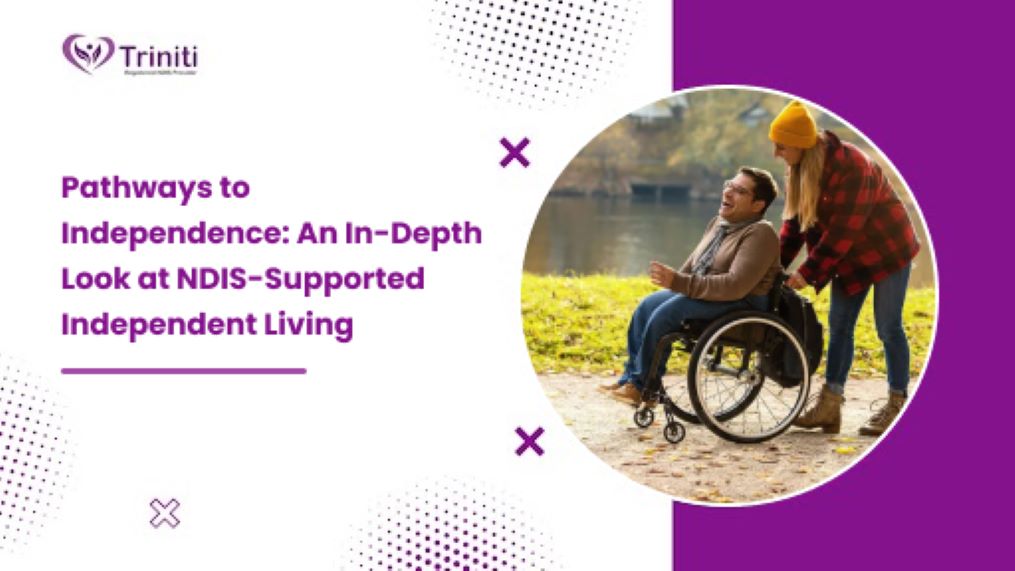+ News and Articles +
Pathways to Independence: An In-Depth Look at NDIS-Supported Independent Living
13 Aug 2024 by Admin
Introduction
The National Disability Insurance Scheme (NDIS) is a transformative program designed to enhance the lives of Australians with disabilities. Among its various supports, NDIS Supported Independent Living (SIL) stands out as a critical service aimed at helping individuals live more autonomously while receiving essential assistance. This article provides an in-depth exploration of NDIS Supported Independent Living, detailing how it works, its benefits, and the considerations involved in accessing this valuable support.
What is NDIS Supported Independent Living (SIL)?
NDIS Supported Independent Living (SIL) is a service offered under the NDIS framework to assist individuals with disabilities in achieving greater independence. SIL provides personalized support to help people manage daily activities while living in their own homes or shared accommodations. The goal of NDIS Supported Independent Living is to enable individuals to live as independently as possible, providing the right balance of disability support providers to meet their specific needs.
SIL services can encompass:
- Personal Care: Assistance with activities such as bathing, dressing, and grooming.
- Household Assistance: Help with cooking, cleaning, and other household tasks.
- Medication Management: Support with taking medications correctly.
- Financial Support: Assistance with budgeting and managing personal finances.
- Social Engagement: Encouragement to participate in community activities and build social connections.
How Does NDIS-Supported Independent Living Work?
The process of accessing NDIS Supported Independent Living (SIL) begins with an NDIS planning meeting. During this meeting, participants discuss their goals, current living situation, and the type of support they require with an NDIS planner. The planner assesses whether SIL is suitable and includes it in the participant’s NDIS plan.
Once SIL is approved, participants can choose from a variety of SIL providers. These providers offer different types of support and living arrangements, such as:
- Shared Housing: Living in a home with others where on-site support is available.
- Private Residences: Receiving regular support while living independently in a private home.
- Full-Time Assistance: Access to 24/7 support for those with higher needs.
Participants collaborate with their chosen provider to develop a customized disability support providers plan, detailing the specific assistance required and its frequency. This plan is flexible and can be adjusted as the participant’s needs change.
Benefits of NDIS-Supported Independent Living
- 1. Enhanced Independence: NDIS Supported Independent Living (SIL) helps individuals gain greater independence by providing support tailored to their needs while allowing them to make their own decisions. This fosters self-confidence and control over their lives.
- Personalized Assistance: One of the significant advantages of NDIS Supported Independent Living is its tailored approach. Support services are customized to fit the unique needs and goals of each participant, ensuring that the assistance provided is both relevant and effective.
- Community Involvement: SIL often includes support for engaging in community activities and building social connections. This aspect of NDIS Supported Independent Living helps individuals integrate into their local community, improving their overall quality of life.
- Flexible Living Arrangements: Participants have the option to choose from various living situations, including shared housing with on-site support or private homes with periodic assistance. This flexibility allows individuals to select a living arrangement that best suits their lifestyle and preferences.
- Skill Development: NDIS Supported Independent Living (SIL) programs often focus on teaching essential life skills, such as cooking, budgeting, and personal care. These skills are crucial for promoting long-term independence and self-sufficiency.
Challenges and Considerations
- Provider Selection: Finding a suitable SIL provider can be challenging. It is essential to research and evaluate potential providers to ensure they meet the participant’s needs and align with their values.
- Funding Limitations: The level of funding for NDIS Supported Independent Living (SIL) can vary. Some individuals may face challenges in accessing the full extent of support they require due to funding constraints. Effective planning and coordination with NDIS representatives can help manage these limitations.
- Transition Process: Moving to a new living arrangement or support model can be a significant adjustment. It is important to have a well-structured transition plan and ongoing support to address any issues that may arise.
- Balancing Support and Independence: Striking the right balance between receiving support and maintaining autonomy can be complex. Participants and providers need to work closely together to ensure that support enhances rather than undermines independence.
Conclusion
NDIS Supported Independent Living (SIL) is a crucial service within the NDIS, designed to support individuals with disabilities in achieving greater independence while receiving tailored assistance. By focusing on personalised care, skill development, and community integration, NDIS Supported Independent Living empowers participants to improve their quality of life and reach their personal goals. Although there are challenges in accessing and navigating SIL, such as finding suitable providers and managing funding, the benefits of increased autonomy and customised support make it a valuable option for those seeking to enhance their living situation. Effective planning, communication, and collaboration are key to making the most of NDIS Supported Independent Living and ensuring a successful and fulfilling experience.



